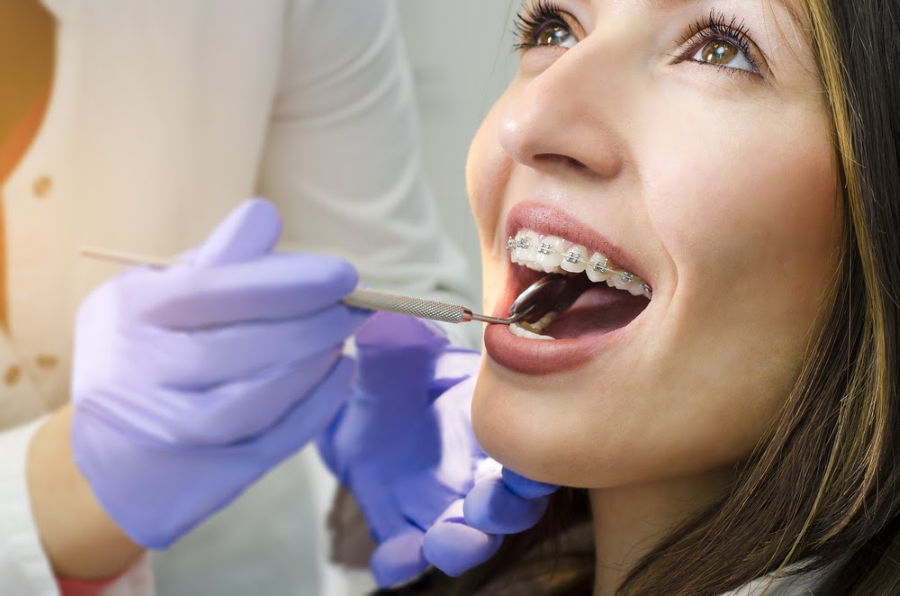Johnson Orthodontics for Dummies
Johnson Orthodontics for Dummies
Blog Article
The Of Johnson Orthodontics
Table of ContentsThe Of Johnson OrthodonticsAll About Johnson OrthodonticsGet This Report about Johnson OrthodonticsNot known Factual Statements About Johnson Orthodontics The 10-Minute Rule for Johnson OrthodonticsSee This Report about Johnson OrthodonticsJohnson Orthodontics - Questions
An orthodontist is a dental professional educated to diagnose, stop, and treat teeth and jaw abnormalities. Orthodontists function with people of all ages, from children to adults.All orthodontists are dental experts, but not all dental professionals are orthodontists. Orthodontic residency programs use intensive, focused direction for dental experts. They concentrate on two areas: How to correctly and safely move teeth Exactly how to appropriately lead advancement in the teeth, jaw, and faceOnce an orthodontist has actually completed training, they have the choice to come to be board licensed (https://www.kickstarter.com/profile/johnsonortho/about).
Johnson Orthodontics Fundamentals Explained
Imbalance, or malocclusion, is one of the most usual reason individuals see an orthodontist. It is genetic and is the result of size differences in between the upper and lower jaw or between the jaw and teeth. Malocclusion causes tooth congestion, an askew jaw, or uneven bite patterns. Malocclusion is typically treated with: Your orthodontist attaches metal, ceramic, or plastic square bonds to your teeth.
If you have just minor malocclusion, you might have the ability to make use of clear braces, called aligners, as opposed to traditional braces. Some individuals require a headgear to help move teeth into line with stress from outside the mouth. After braces or aligners, you'll require to wear a retainer. A retainer is a custom-made tool that keeps your teeth in location.

They can develop added space in the mouth without having to draw teeth. Orthodontists use cords, surgical screws, or plates to support your jaw bone.
The Only Guide for Johnson Orthodontics
During your first orthodontic appointment, you'll likely have: A dental examPhotos taken of your face and smileDental X-raysPanoramic (360 level) X-rays of your face and headImpressions to produce molds of your teethThese tests will certainly help your orthodontist understand exactly how to continue with your therapy. An orthodontist is a dental practitioner that's had training to treat your teeth and jaw.
Orthodontists may do surgical procedure, exams,X-rays,and even more to help you achieve an extra comfortable, much healthier smile. An orthodontist is concentrated on your bite, so something like a cracked tooth would be dealt with by a dental professional. Orthodontists are dentists but not all dental practitioners are orthodontists. Orthodontists are concentrated on your bite, or the way your teeth fit with each other, and the straightness of your teeth.
Ever questioned how celebrities constantly appear to have completely aligned teeth? Orthodontists are dental specialists that concentrate on fixing abnormalities in the teeth and jaws.
Our Johnson Orthodontics Ideas

These removable trays are custom-made to considerably move the teeth's position. In situations of slim jaws, palatal expanders can be used to produce space for proper tooth positioning.
The Main Principles Of Johnson Orthodontics
While achieving an attractive smile is an all-natural perk of orthodontic therapy, the benefits prolong much beyond visual appeals. Properly lined up teeth and a balanced bite contribute to boosted dental wellness in numerous ways: Straight teeth are less complicated to clean, which assists avoid tooth cavities and gum disease. A proper bite enables effective chewing, which helps in digestion and total intestine health.
What is the difference in between a dental professional and an orthodontist? All dental practitioners, consisting of orthodontists, treat the teeth, gums, jaw and nerves.
You can believe of both doctors that Click This Link deal with periodontal and teeth problems. The major distinction is that ending up being an orthodontist needs a specific specialty in dealing with the imbalance of the teeth and jaw.
Indicators on Johnson Orthodontics You Need To Know
An orthodontist is a dental professional that has undergone training to specialize in the medical diagnosis, prevention and therapy of irregularities in the jaw and teeth. They can also determine possible problems in teeth positioning that may create when conditions are left without treatment.
This consists of all the required education to end up being a general dental professional. According to the American Pupil Dental Association (ASDA), it means you will need to have either a Doctor of Medication in Dentistry (DMD) or a Medical Professional of Oral Surgery (DDS). Simply put, orthodontists require to finish oral college and then get an orthodontics specialized education.
See This Report on Johnson Orthodontics

When you have a healthy bite, you can talk, eat and eat properly, hence improving your top quality of life. Various other than the orthodontist, we often see assistants dealing with these oral specialists in their clinics. What is an orthodontist assistant called? They're appropriately referred to as orthodontic aides. They are specialized assistants, and are trained to handle oral gear and provide preventative dental healthcare.
Report this page